Preface Shenzhen Basics High-quality Development Rule of law Urban Civilization People's wellbeing Sustainable development Digital Manual
Preface
Editor: Zhang Zeling | Updated: 2024-06-25
Signaling the start of reform and opening up in China, Shenzhen is a brand-new city built by the Communist Party of China (CPC) and the Chinese people, a brilliant demonstration of socialism with Chinese characteristics created from scratch. It is an important window showcasing to the outside world the achievements of reform and opening up in China, and is an important window through which the international community observes China's reform and opening up. Shenzhen thrives with the rising tides of reform and opening up. A city full of charm, dynamism, vitality and innovation, it continues to be a pioneer in the new era and a trailblazer in China's new journey, to promote the great rejuvenation of the Chinese nation on the Chinese path to modernization, striving to build a pilot demonstration area of socialism with Chinese characteristics, set an example as a great city in a great modern socialist country.
This is Shenzhen.
Shenzhen Basics
Editor: Zhang Zeling | Updated: 2024-07-04

Mission
Shenzhen was established in March 1979. In August the following year, the city was turned into the country’s first special economic zone. Over the past four decades, Shenzhen has transformed from a small backward border town into a modern and international metropolis, creating a miracle in the history of world development. In August 2019, the CPC Central Committee and the State Council issued the Guidelines on Supporting Shenzhen in Building a Pilot Demonstration Area of Socialism with Chinese Characteristics, and the city was once again presented with a new major opportunity and a powerful mission. In accordance with the requirements of building “a model city of high-quality development,” “a model city under the rule of law,” “a model city of urban civilization,” “a beacon for people’s wellbeing” and “a vanguard of sustainable development,” Shenzhen is striving to continue to create new and greater miracles that will impress the world.
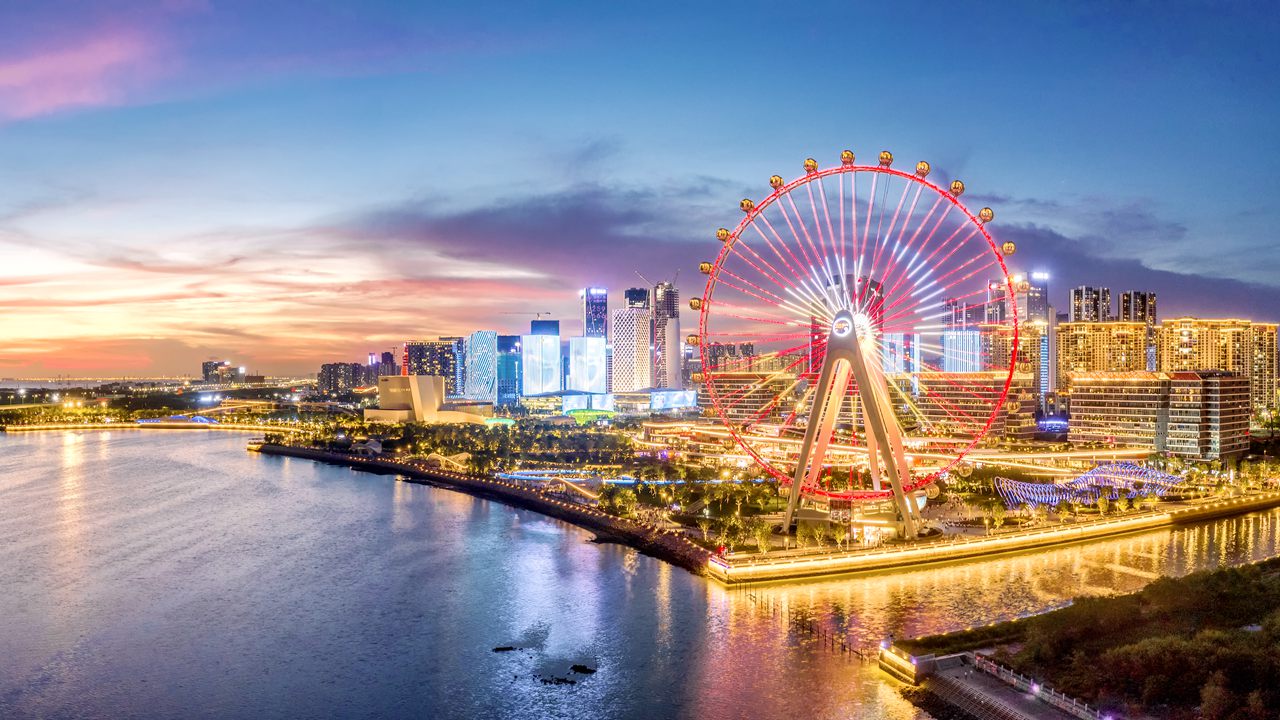
Shenzhen is committed to building a globally influential economic hub by continuously accelerating the construction of an advanced manufacturing center, a technology innovation center, a consumption center, a logistics center and a financial center with global influence.
By 2025, Shenzhen will be among the top global cities in terms of economic strength and quality of development, possessing world-class R&D investment intensity and industrial innovation capacity. The city will see a significant increase in cultural soft power with its level of public services and ecological environment quality reaching internationally advanced levels, and the city will become a modern, international and innovative city. By 2035, Shenzhen’s high-quality development will be a national model, and it will lead the world in comprehensive economic competitiveness. Shenzhen will become an innovative, entrepreneurial and creative city with global influence, becoming an exemplary city for building a modern socialist country. By the middle of this century, Shenzhen will stand out as one of the world’s advanced cities and become a global benchmark city with outstanding competitiveness, innovation and influence.
Geography
Adjacent to Hong Kong, Shenzhen is a coastal city in southern Guangdong Province located on the east bank of the Pearl River Estuary. To the east of the city are Daya Bay and Dapeng Bay, while the Pearl River Estuary and Lingding Bay lie to its west. Shenzhen River connects Hong Kong to the south, and to the north of Shenzhen are the cities of Dongguan and Huizhou. Its longitude lies between 113.43 and 114.38 degrees east, and its latitude lies between 22.24 and 22.52 degrees north. Covering a total area of 1,997.47 square kilometers, its subtropical monsoon climate brings warmth and plenty of precipitation to the city.

City area: 1,997.47 sq km
Total marine water area: 1,145 sq km
Coastline: 260.5 km
Annual average temperature: 23.0℃
City trees: litchi tree and mangrove tree
City flower: bougainvillea
Division
Shenzhen has nine administrative districts and one new area: Futian District, Luohu District, Yantian District, Nanshan District, Bao’an District, Longgang District, Longhua District, Pingshan District, Guangming District, and Dapeng New Area. On December 16, 2018, the Shenshan Special Cooperation Zone in Shanwei City was officially inaugurated.
Population
Shenzhen has 17.79 million permanent residents. As a young immigrant city, Shenzhen has been a magnet for innovative, entrepreneurial and creative talents from all over the world. According to the seventh national population census, the average age of Shenzhen residents was 32.5.
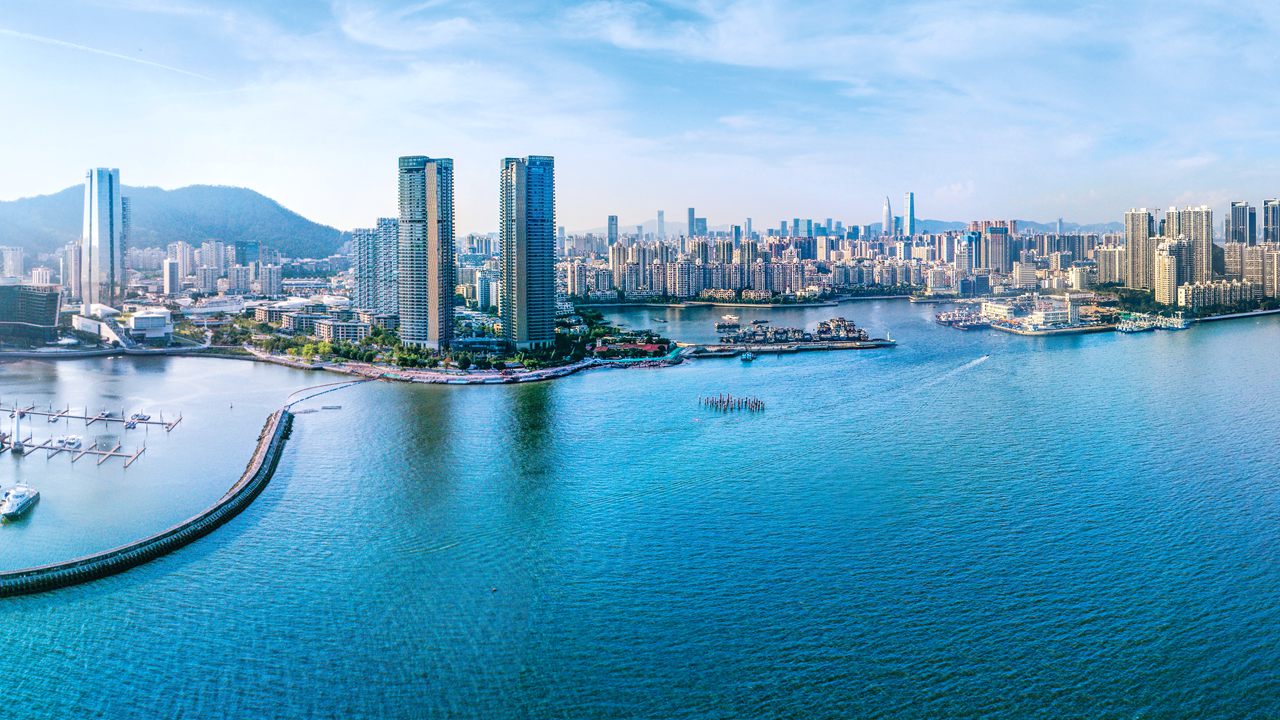
Language
The mainstream language in Shenzhen is Mandarin Chinese, also known as Putonghua. Cantonese and English are also widely used. Some public service institutions may provide multilingual services. Citizens from all over the country also use local dialects for communication.
Economy
In 2023, Shenzhen's GDP reached 3.46 trillion yuan with a year-on-year growth of 6%, and its import and export volume was 3.87 trillion yuan, up 5.9% from last year.
Foreign trade
Shenzhen's export volume has taken first place among cities on the Chinese mainland for 31 years running.
High-quality Development
Editor: Zhang Zeling | Updated: 2024-07-04
Innovation-Driven
Shenzhen is committed to creating a whole-process innovation ecological chain of “basic research + technical research + achievement industrialization + technology finance + talent support” to form a market-oriented technological innovation system with enterprises as the main body and featuring deep integration of production, education and research. A large number of innovative companies have emerged, such as Huawei, BYD, Tencent and DJI among others.
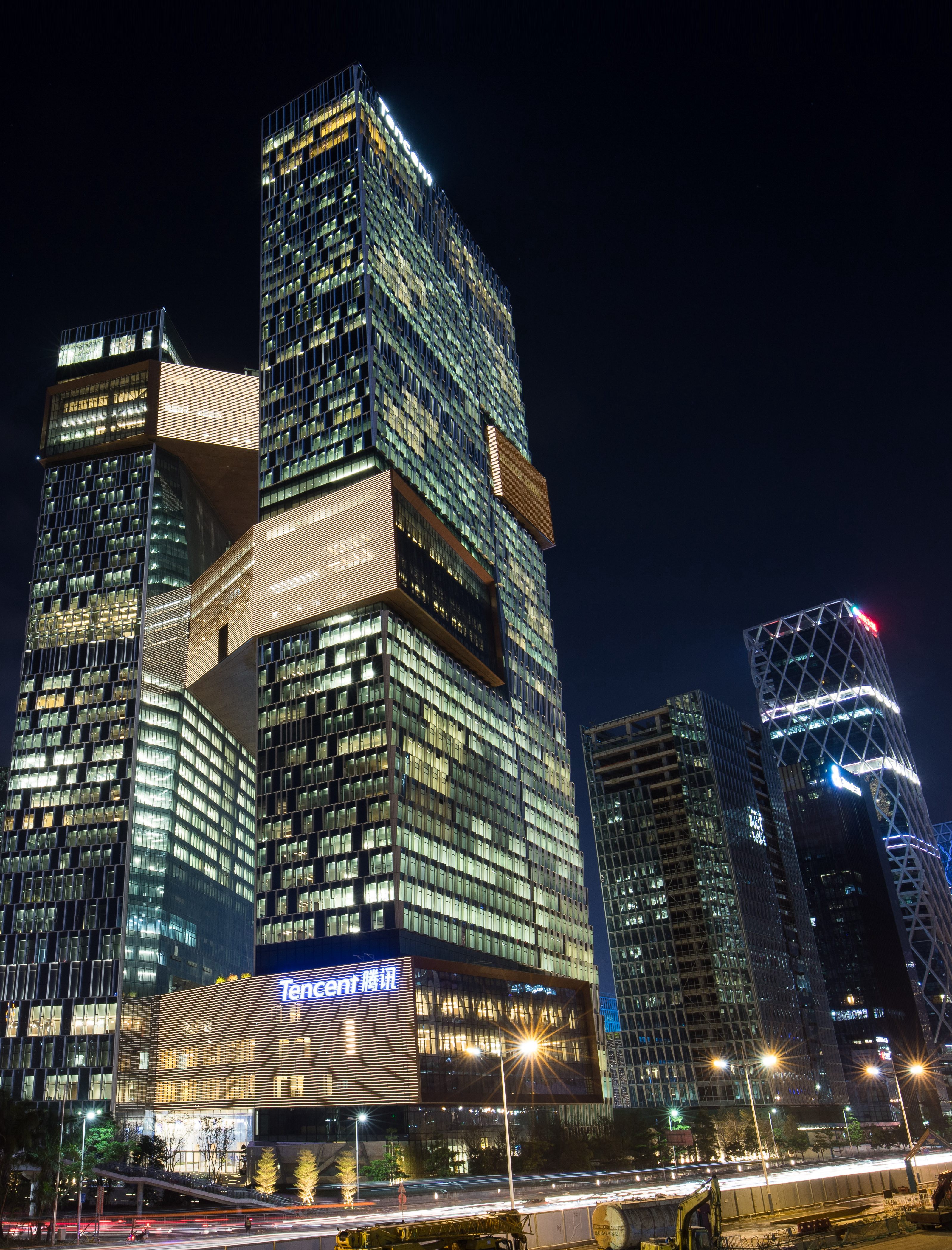
The Fortune Global 500 list
11 local enterprises made it to the 2023 Fortune Global 500 list
Talent Aggregation
Shenzhen is committed to building a high-level specialized talent community in the Guangdong-Hong Kong-Macao Greater Bay Area. It is the country’s first city to promulgate a regulation to designate November 1 as Talent Day and has also established a talent honor and reward system
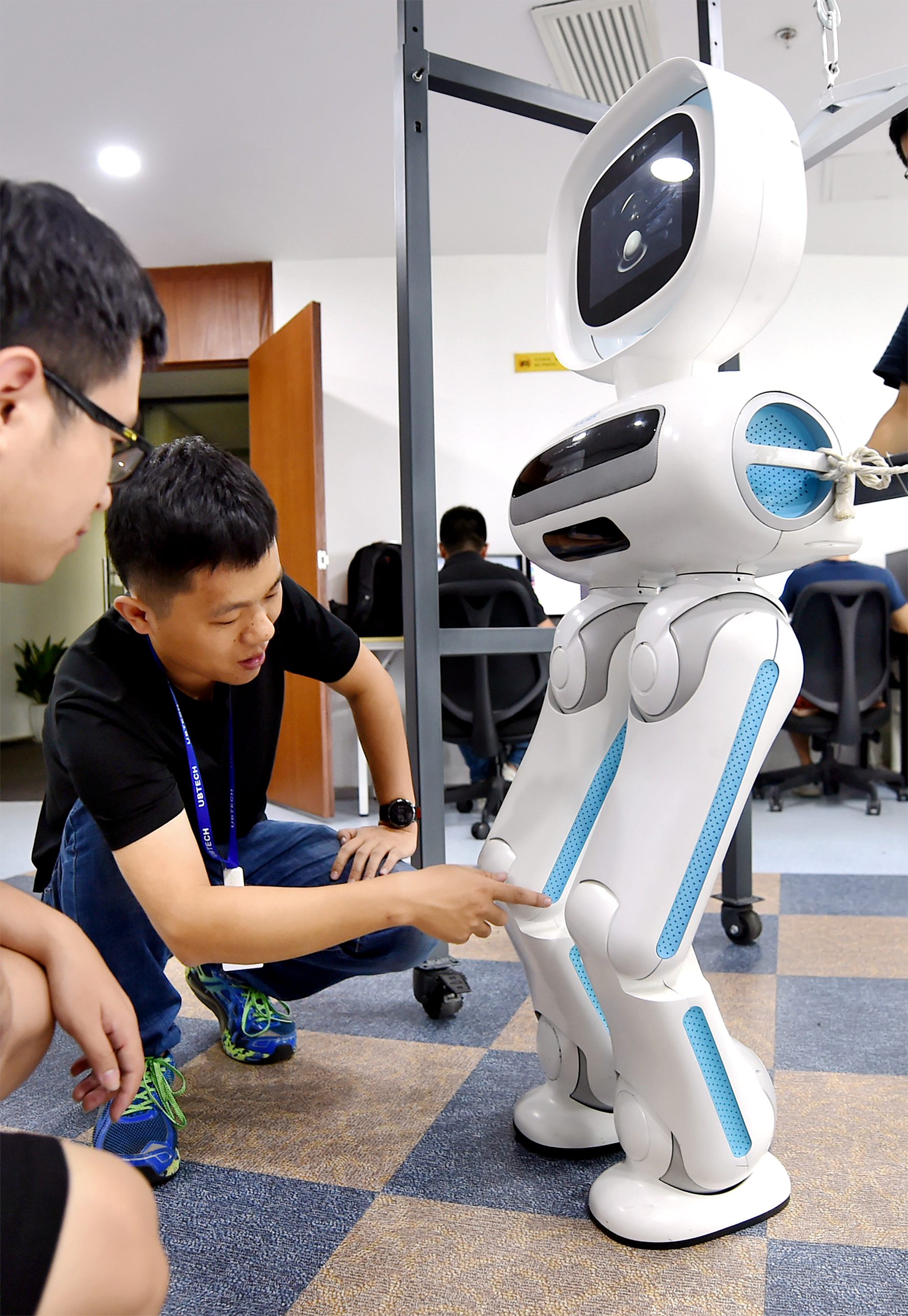
R&D expenditure
The city’s R&D expenditure accounted for 5.81% of its total GDP in 2023.
PCT
The number of PCT international patent applications ranks first in the country.
State-level high-tech enterprises in 2023
The city is home to 24,700 State-level high-tech enterprises in 2023.
No less than 30%
Shenzhen government’s funding on basic research and applied basic research should be no less than 30% of municipal science and technology research and development funds.
Six “90%”
More than 90% of innovative enterprises are local enterprises
More than 90% of R&D personnel are employed by enterprises
More than 90% of employee invention patents come from enterprises
More than 90% of R&D institutions are based in enterprises
More than 90% of R&D funds are contributed by enterprises
More than 90% of major technological invention patents are owned by leading enterprises
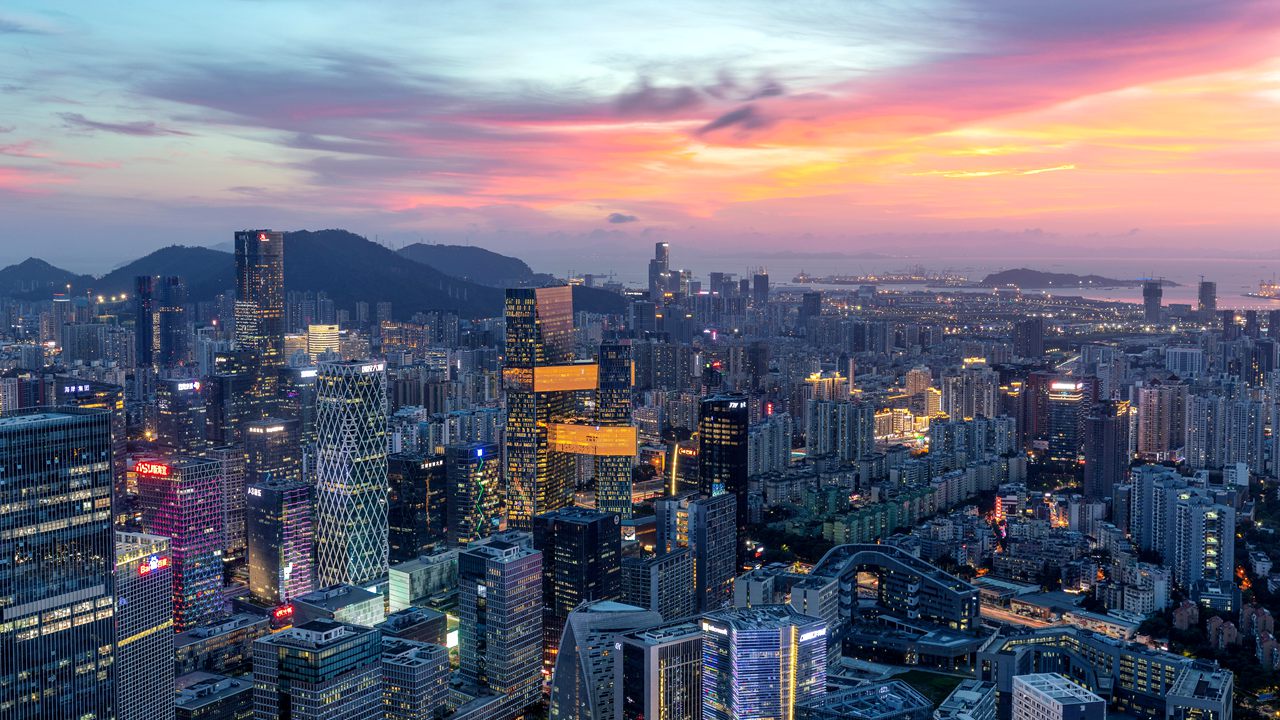
Implement five actions
Action to consolidate basic research
Action to tackle key core technology difficulties
Action to accelerate the industrialization of R&D results
Action to integrate science, technology and finance
Action to gather innovative talents
Improve five forces
Leading innovation power
Innovative force to face new challenges
Innovation driving force
Innovation supportive force
Motive force of innovation
Construct five places
Place of original innovation
Place of key core technologies
Best place for industrialization of scientific and technological achievements
Place for integration of science, technology and finance
Gathering place for world-class scientific and technological innovation talents
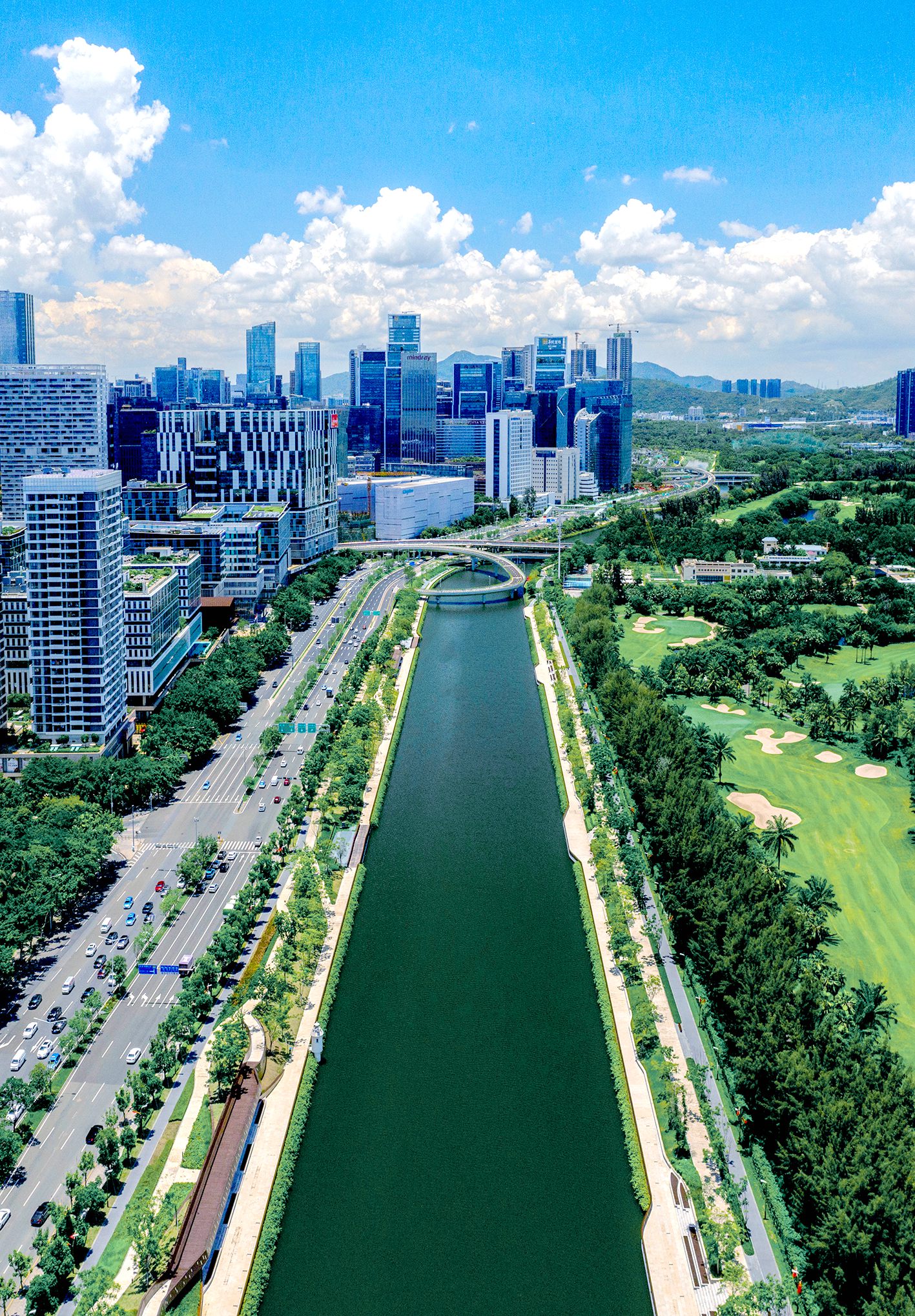
Shenzhen has accelerated the integration of the "four chains" of industry chain, innovation chain, talent chain and education chain, vigorously developed strategic emerging industries and future industries, and built a modern industrial system for the future.
41.9%
The added value of strategic emerging industries in Shenzhen accounts for 41.9% of the city’s GDP in 2023.
“20+8”
On June 6, 2022, Shenzhen introduced a package of policies to promote industrial transformation and upgrading, proposing to develop 20 strategic emerging industrial clusters and 8 key future industries.
20 Strategic emerging industrial clusters
network and communication
semiconductor and integrated circuit
ultra-high-definition video display
intelligent terminal
intelligent sensor
software and information service
digital creativity
modern fashion
industrial machine
intelligent robot
laser and additive manufacturing
precision instrument and equipment
new energy
safety, energy saving and environmental protection
intelligent networked vehicles
new materials
high-end medical equipment
biomedicine
big health
marine industry clusters
8 Key future industries
synthetic biology
blockchain
cells and genes
aerospace technology
brain science and brain-like intelligence
deep earth and deep sea
visible light communication and optical computing
quantum information
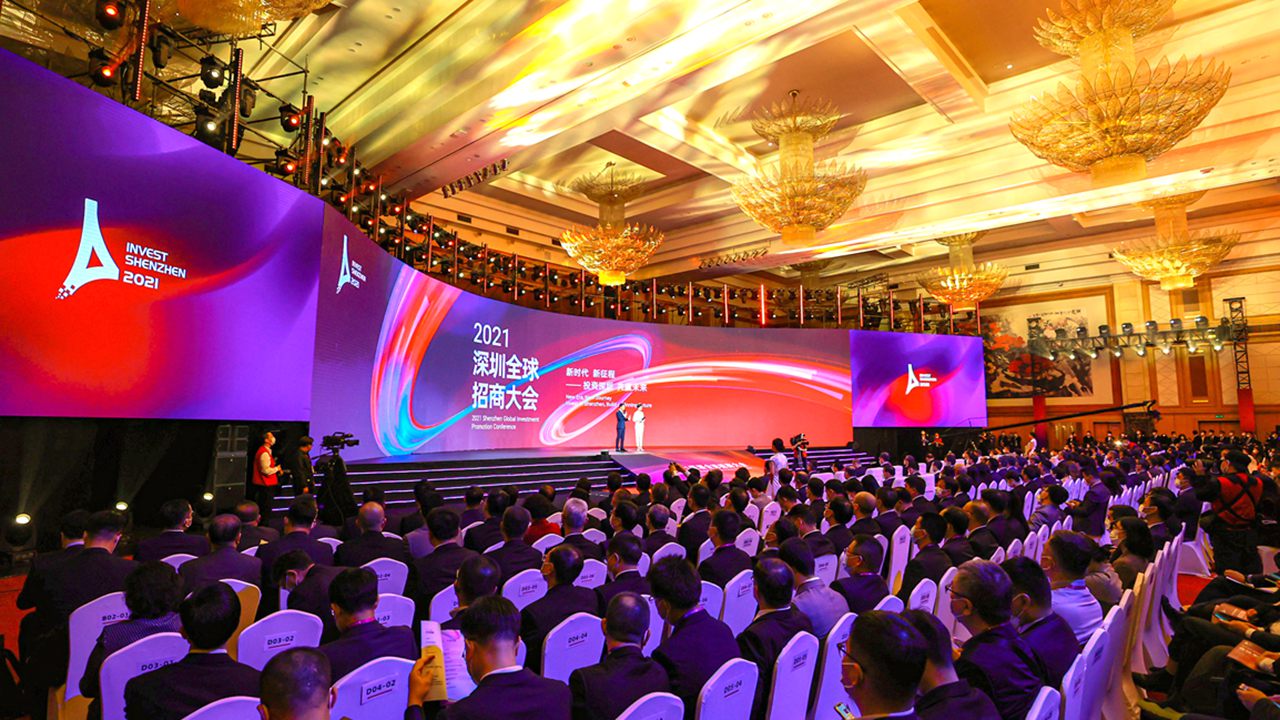
Shenzhen has put forward great effort to make good use of the key moves of the pilot comprehensive reform, to promote the comprehensive deepening of reform and opening up, and to accelerate the formation of a new pattern of reform and opening up.
Comprehensive pilot reforms:
the pilot project of a comprehensive reform for Shenzhen to build a pilot demonstration area of socialism with Chinese characteristics was officially released and a list of 40 authorized measures were unveiled in 2020. On October 14, 2022, the National Development and Reform Commission issued a notice to sort out 44 efforts under 18 measures, four categories that Shenzhen made to pilot a comprehensive reform, and encouraged all local authorities nationwide to study and learn from Shenzhen's practices.
GEM reform and pilot registration system:
the growth enterprise market (GEM) reform and the pilot registration system were implemented on August 24, 2020.
Friendly relations:
Shenzhen has established friendly relations with 90 provinces and cities in 57 countries (including 24 sister cities and 66 friendly exchange cities).
Investment promotion conference:
The global investment promotion conference has been held in Shenzhen for five consecutive years. More than 380 projects worth over 1,000 billion yuan were inked at the conference in 2023.
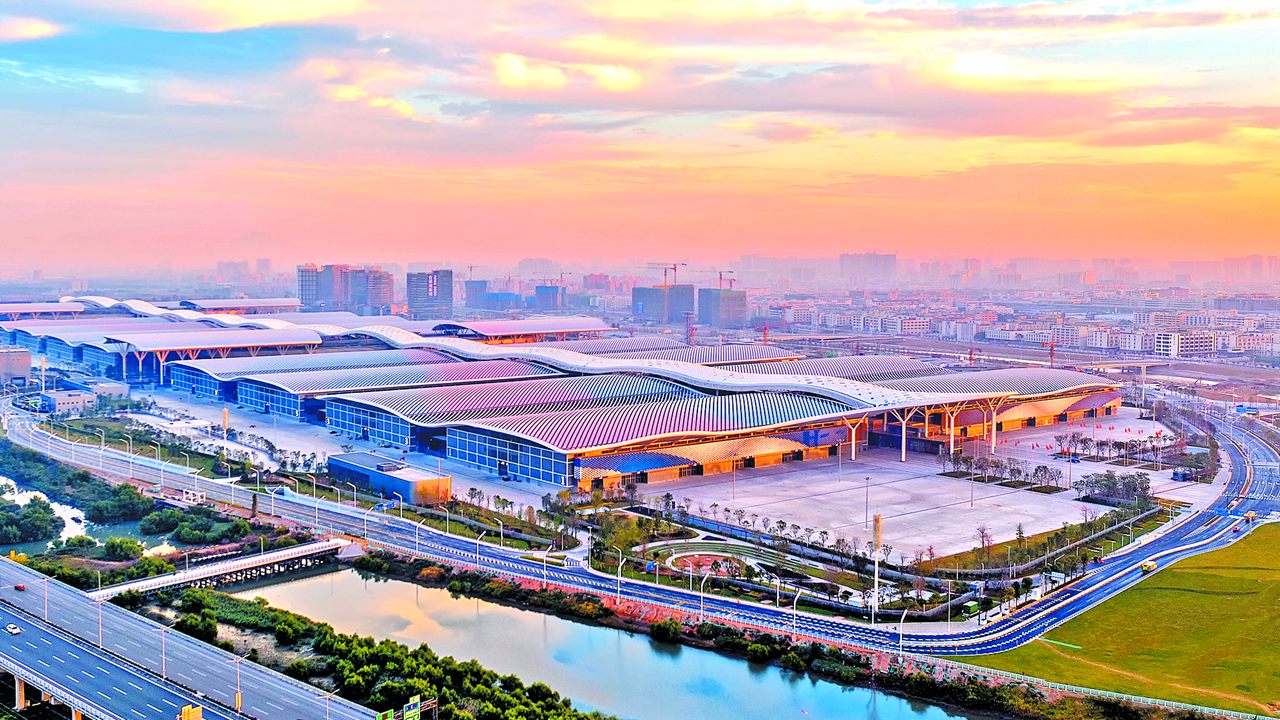
High quality exhibitions:
Shenzhen’s convention and exhibition industry has prospered. Large-scale and high-quality exhibitions such as the China Hi-Tech Fair (CHTF), China (Shenzhen) International Cultural Industries Fair (ICIF) and International Signs & LED Exhibition (ISLE) have been successfully held.
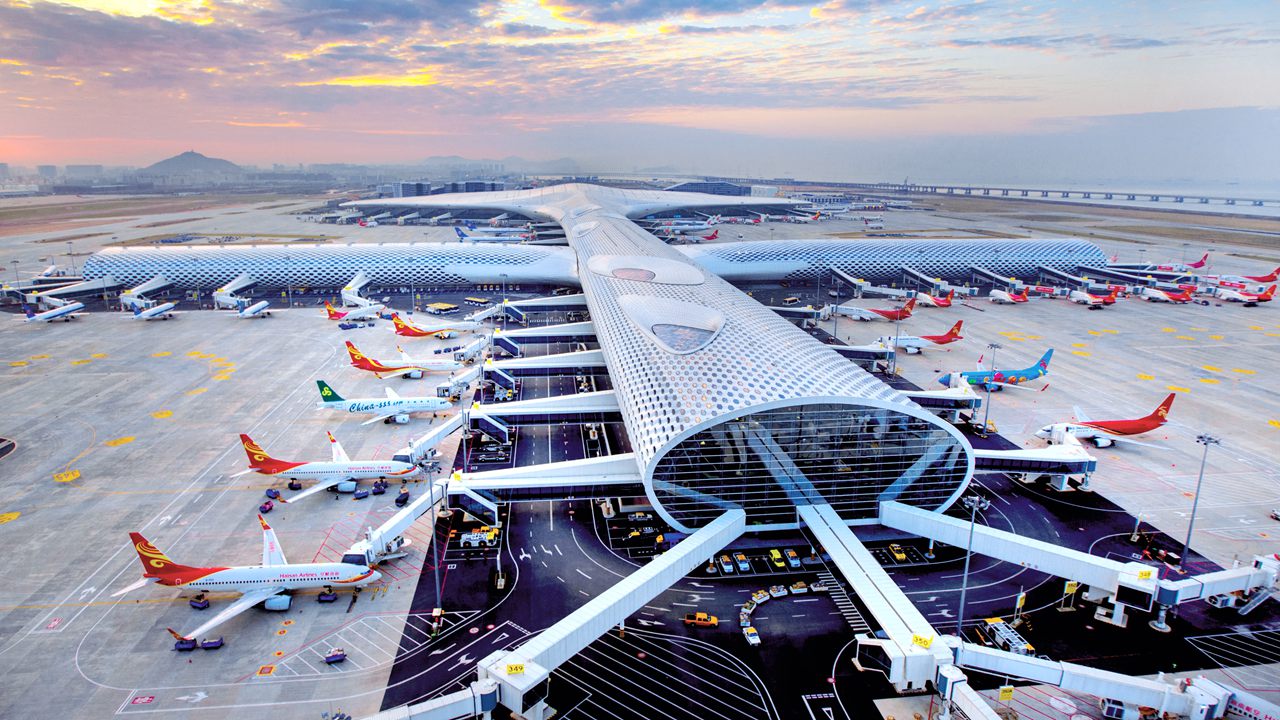
In 2021, Shenzhen's two typical cases of "expanding the scope of mutual recognition of qualifications in professional services with Hong Kong and Macao" and "creating a new plateau for the innovative development of cross-border medical and health services" were selected as the second batch of "Best Practice Cases" of the pilot program for comprehensively deepening innovative development of trade in services, and promoted nationwide.
Boosting the construction of GBA
As an important engine of the Guangdong-Hong Kong-Macao Greater Bay Area (GBA), Shenzhen seizes the major opportunities provided by GBA construction to enhance its interconnectivity with Hong Kong in terms of infrastructure as well as in policies and standards, thereby building a good rapport between its citizens and those of Hong Kong.
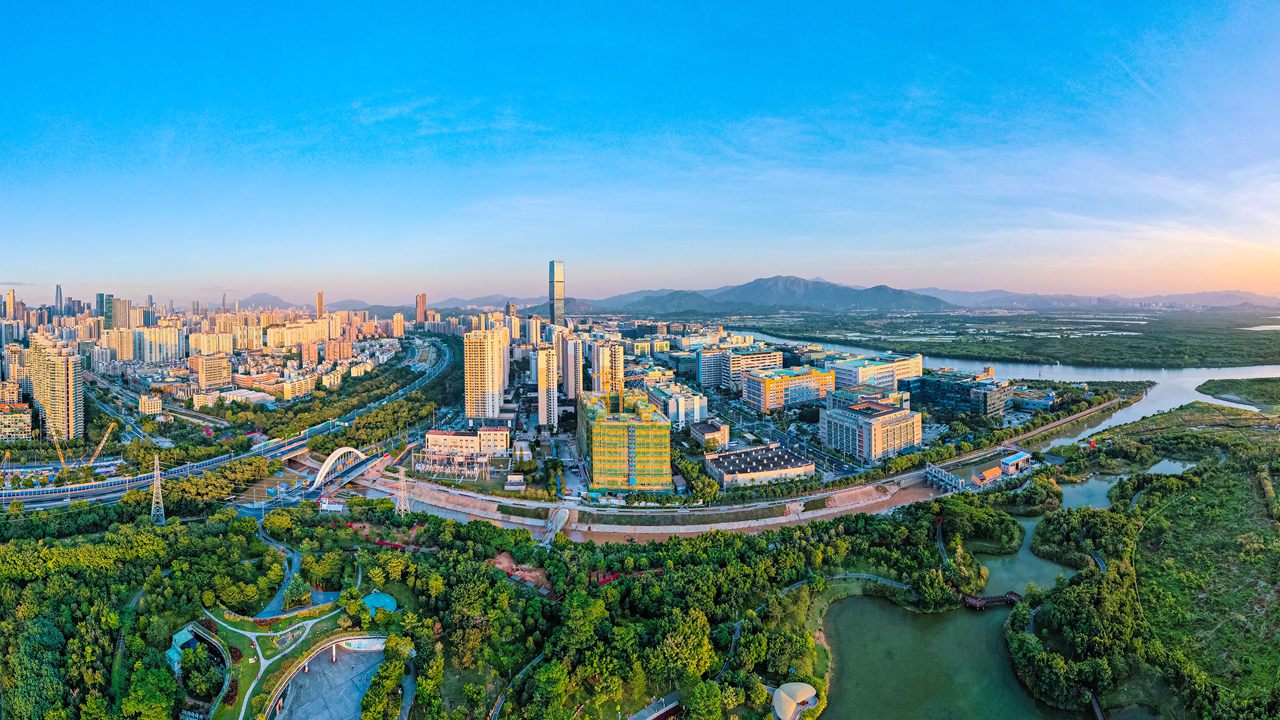
Comprehensive reform and opening up in Qianhai:
in 2021, the CPC Central Committee and the State Council issued the Plan for Comprehensively Deepening the Reform and Opening up of the Qianhai Shenzhen-Hong Kong Modern Service Industry Cooperation Zone. Various city departments have achieved system innovations in Qianhai, bringing the total number of innovative projects tested in the area to 835.
Shenzhen-Hong Kong cooperation:
Relying on Qianhai, the Lok Ma Chau Loop area and other major strategic platforms, Shenzhen cooperates with Hong Kong in scientific and technological innovation, transportation infrastructure, finance, law, education, medical care and other fields to enhance the people’s well-being of the two cities and help Hong Kong better integrate into the overall national development.
Rule of law
Editor: Zhang Zeling | Updated: 2024-07-04
Democracy and the rule of law
Shenzhen takes the whole-process people’s democracy as the key to develop democracy and the rule of law. The city is committed to building a model city of the rule of law by promoting scientific legislation, strict implementation of laws, fair administration of justice, and encouraging people to abide by laws, and is endeavoring to become a model city of socialist rule of law with Chinese characteristics.
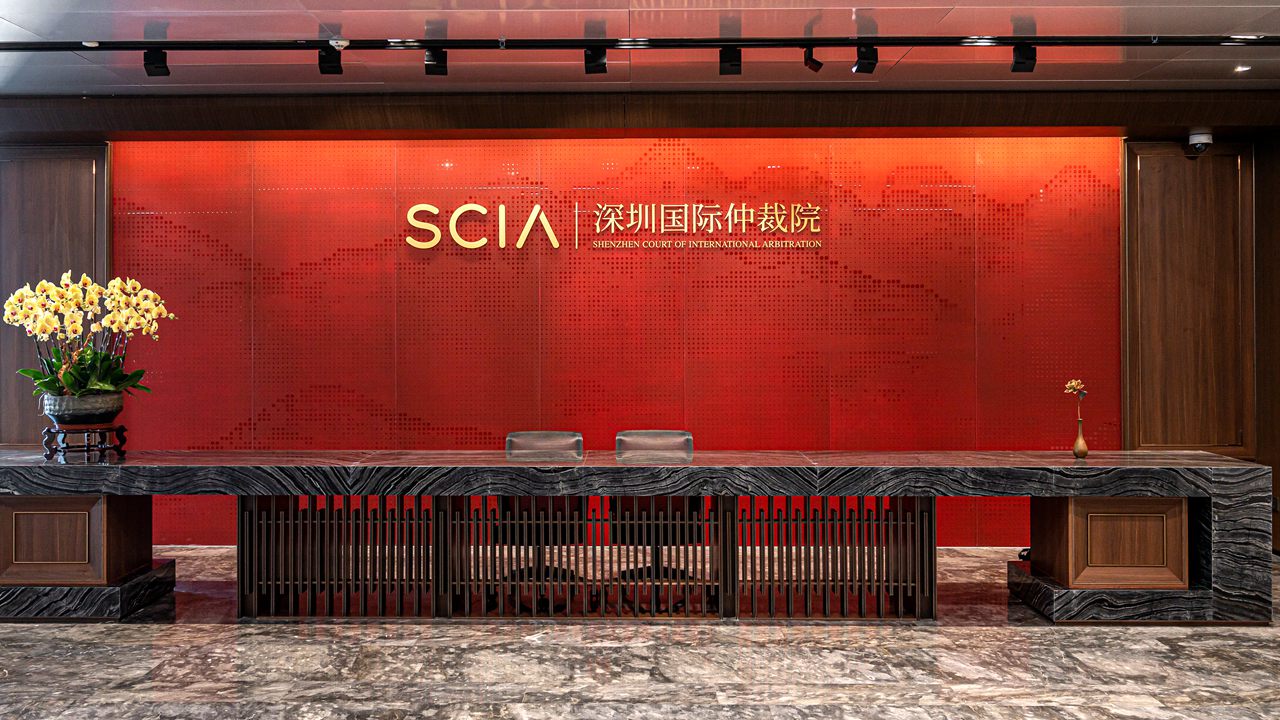
Building a Model City of Socialist Rule of Law with Chinese Characteristics
The Committee for Overall Law-based Governance of the CPC Central Committee unveiled Guidelines on Supporting Shenzhen in Building a Model City of Socialist Rule of Law with Chinese Characteristics on May 25, 2021, taking the position that Shenzhen should take the lead in building a law-based city, government and society, and should endeavor to become a model city of socialist rule of law with Chinese characteristics in the new era.
Scientific legislation
As a city empowered with the right of legislation for a special economic zone and a city divided into administrative regions, Shenzhen has released a batch of pioneered regulations such as the Shenzhen Special Economic Zone Data Regulations.
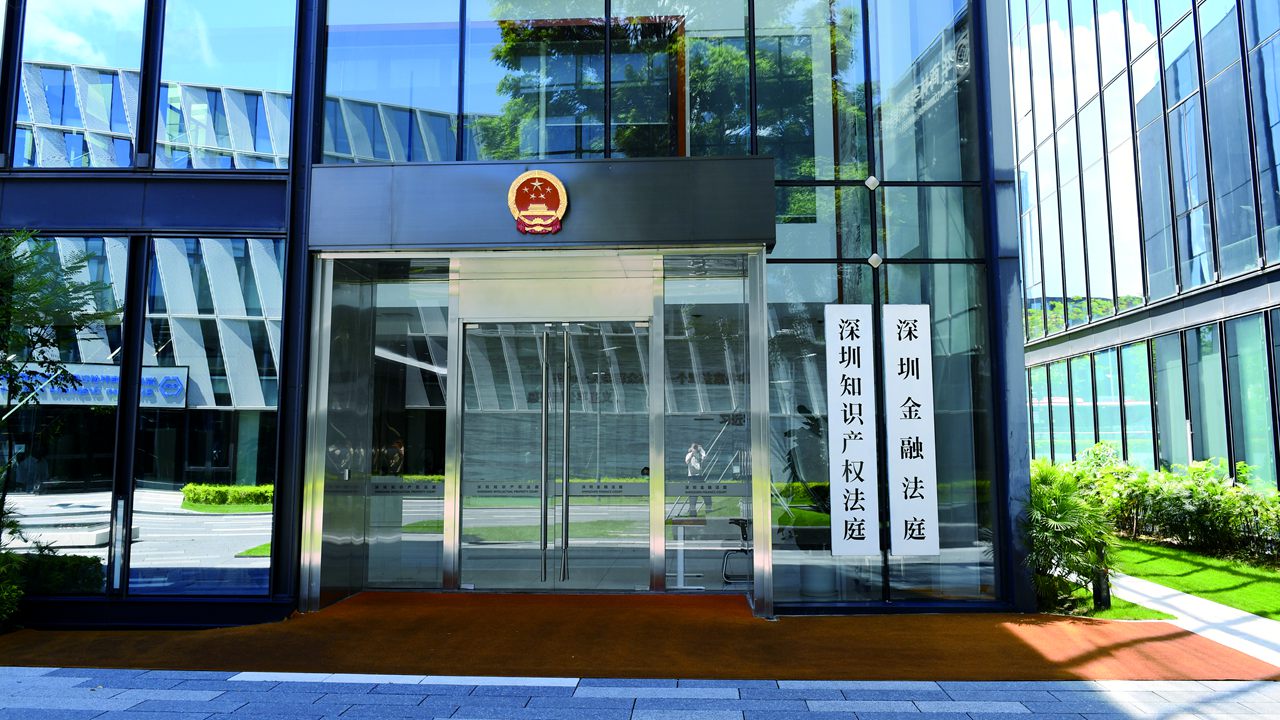
Shenzhen pioneered the country to inaugurate China’s first personal bankruptcy rule, which is hailed as a “groundbreaking” move.
Government service
The law-based government provides a good business environment. As a city included in the first batch of model cities building a national rule-of-law government, Shenzhen is endeavoring to create a market-oriented, rule-of-law and international business environment, providing accurate, intelligent government services, thus attracting more and more innovative resources from all over the world.
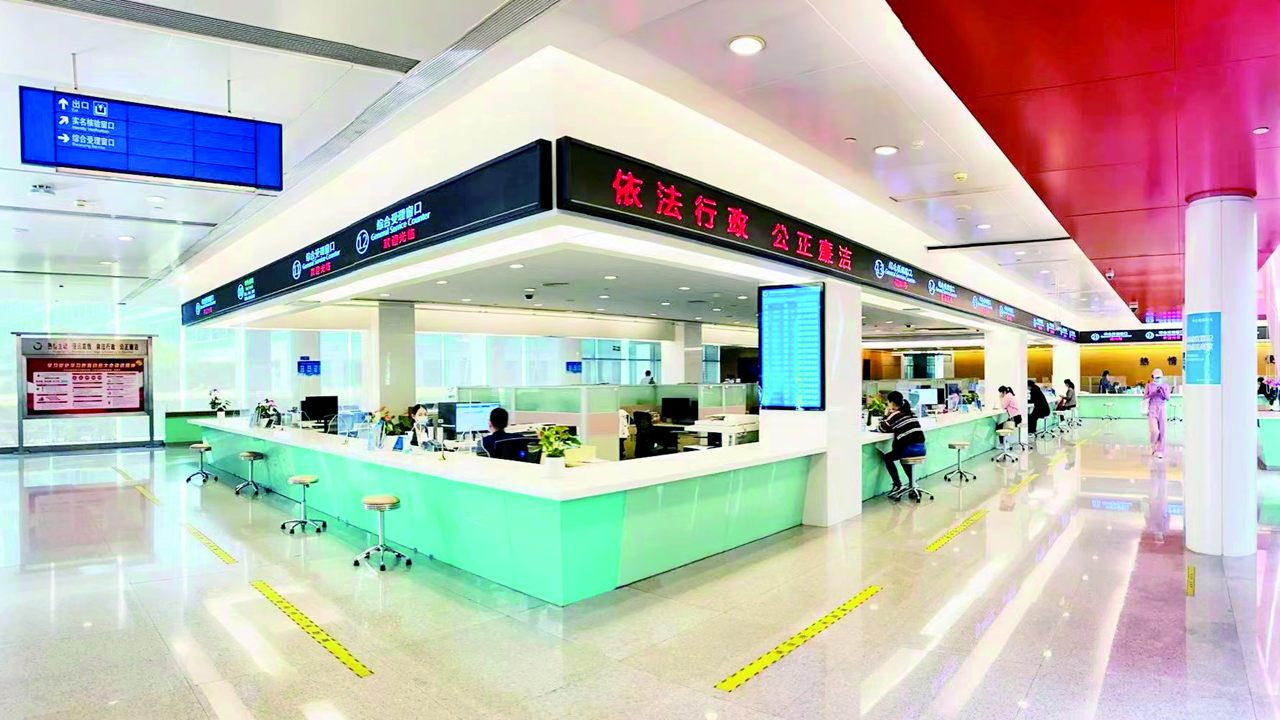
227.4 business entities per 1,000 people
1,288 enterprises per 10,000 people
one entrepreneur per 10 people
Services across the city:
80% of Shenzhen’s governmental service items can be handled in the city’s district offices, and 90% of the service items can be handled online.
Social governance
Rule of law is an important component of organized urban social governance. Shenzhen handles social issues by applying the thinking and methods of the rule of law, and uses technologies, such as big data, cloud computing and artificial intelligence, to enhance intelligent social governance.

As a most highly connected city, Shenzhen is dedicated to be a role model in building a new type of international smart city, a model city for building “Digital China,” and a pioneering digital city around the world.
The city is working on an intelligent system supportive of people’s livelihood.
Urban Civilization
Editor: Zhang Zeling | Updated: 2024-07-04
Cultural-ethical advancement
A happy life is inseparable from the development and nourishment of modern urban civilization. Shenzhen comprehensively promotes the construction of an urban spiritual civilization and the public cultural service system, and nurtures the city’s scientific, humanistic and artistic spirit.
Shenzhen has been recognized six times by the Central Government as a “national civilized city”.
The spirit of the special economic zone:
enterprising, pioneering and persevering

There are more than 3.81 million volunteers registered in the city, one out of every five Shenzhen residents is a volunteer.
UNESCO recognized Shenzhen as a global model for its promotion of reading.
Sports venue booking platform
There are more than 30,000 sports venues in the city, covering a total of 30 million square meters. A sports venue booking platform has been launched, allowing users to book over 1,930 gymnasiums and stadiums and nearly 6,500 sports fields.
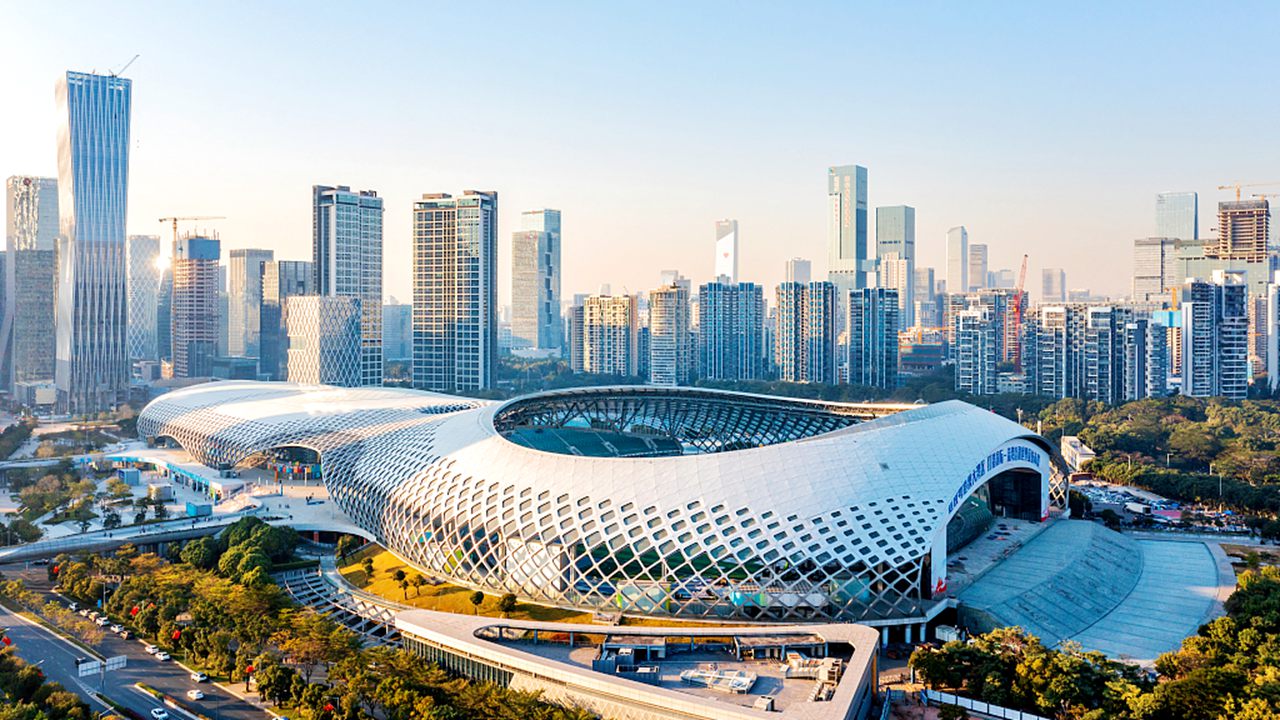
New cultural facility
Shenzhen Reform and Opening-up Exhibition Hall
Shenzhen Creative Design Hall
New Hall of Shenzhen Museum
New Shenzhen Technology Museum
Shenzhen Marine Museum
Shenzhen Nature Museum
New Shenzhen Art Museum
Shenzhen Innovation and Creative Design Academy
Shenzhen Book City Bay Area Store
Shenzhen Conservatory of Music
Shenzhen Opera House
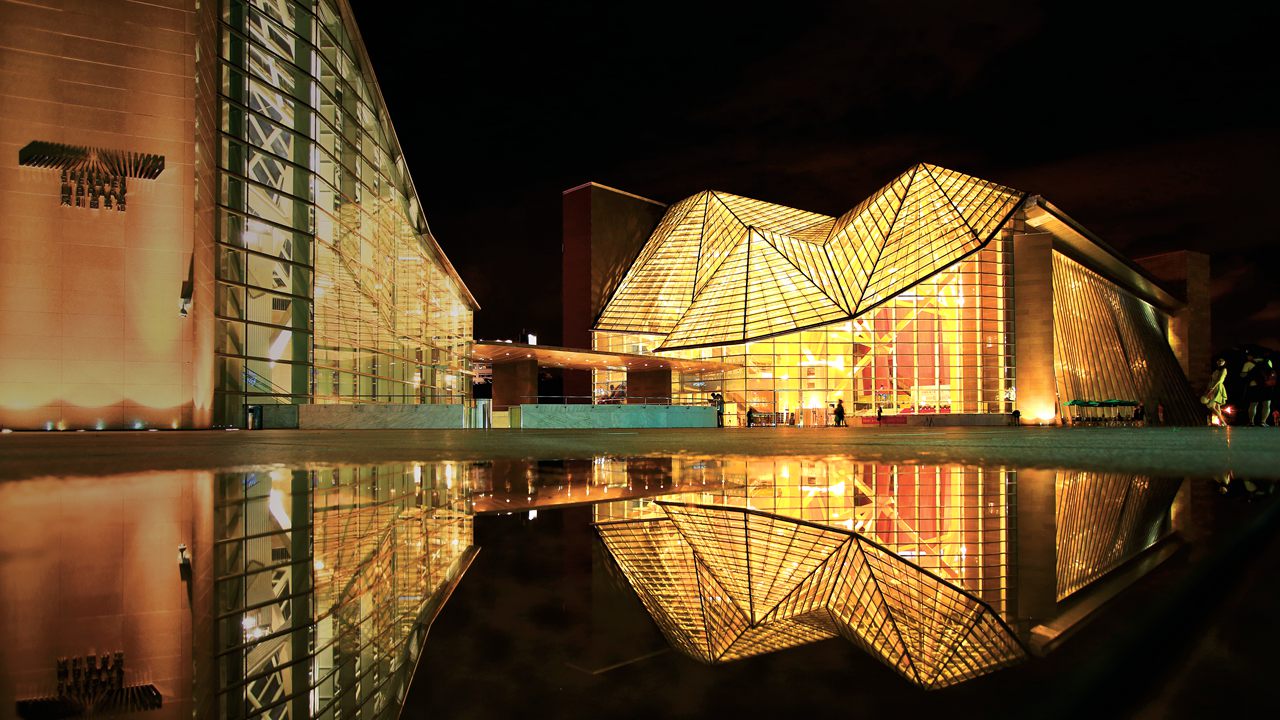
10 blocks with distinct cultural characteristics
Dapeng Fortress
Nantou Ancient Town
Dafen Oil Painting Village
Guanlan Printmaking Base
Gankeng Hakka Town
Dalang Fashion Town
Dawan Ancestral Residence
Shekou Sea World
OCT-LOFT
Huaqiangbei Science and Technology Fashion Culture Block
Culture industry
The cultural industry is the spiritual carrier that reflects a city’s civilization progress. Shenzhen has continued to improve the modern cultural industry systems and market systems, focusing on the cultural industry and tourism, and establishing a number of Chinese cultural brands with international influence.

The added value of cultural industries has accounted for more than 8% of the city’s GDP for many consecutive years.

Shenzhen is the first city in China to be designated as a “City of Design” by UNESCO.

Events such as China (Shenzhen) International Cultural Industries Fair, Shenzhen Design Week, and Shenzhen Fashion Week, are world-famous.

People's wellbeing
Editor: Nie Lumeng | Updated: 2024-07-04
Good child care
Good child care is related to the future of every family and the city. With an orientation of universal welfare, Shenzhen propels quality care for children. Shenzhen has explored and formed a construction model of nursery institutions which are guided by State-owned enterprises, integrate healthcare with education, are financed either by private companies with governmental subsidies or by the government and operated by private enterprises. Parents also provide support for the institutions that are an integral part of nursery houses and kindergartens.
So far, there have been more than 700 nursery institutions, covering over 90% of the city’s subdistricts.
So far, there are approximately 590,000 children in more than 1,900 kindergartens in the city. Public kindergartens account for 55% of the total number of kindergartens.
Premium education
Shenzhen has always adhered to the strategy that education is a top development priority, fully promoting the "large-scale school construction plan," achieving leap-forward development of higher education, and forming a "Shenzhen model" for vocational education.
During the 13th Five-Year Plan period, the average annual growth rate of government budgetary spending on education was 24.5%.
The general public budget education expenditure accounted for 27.8% of the city’s general public budget expenditure.
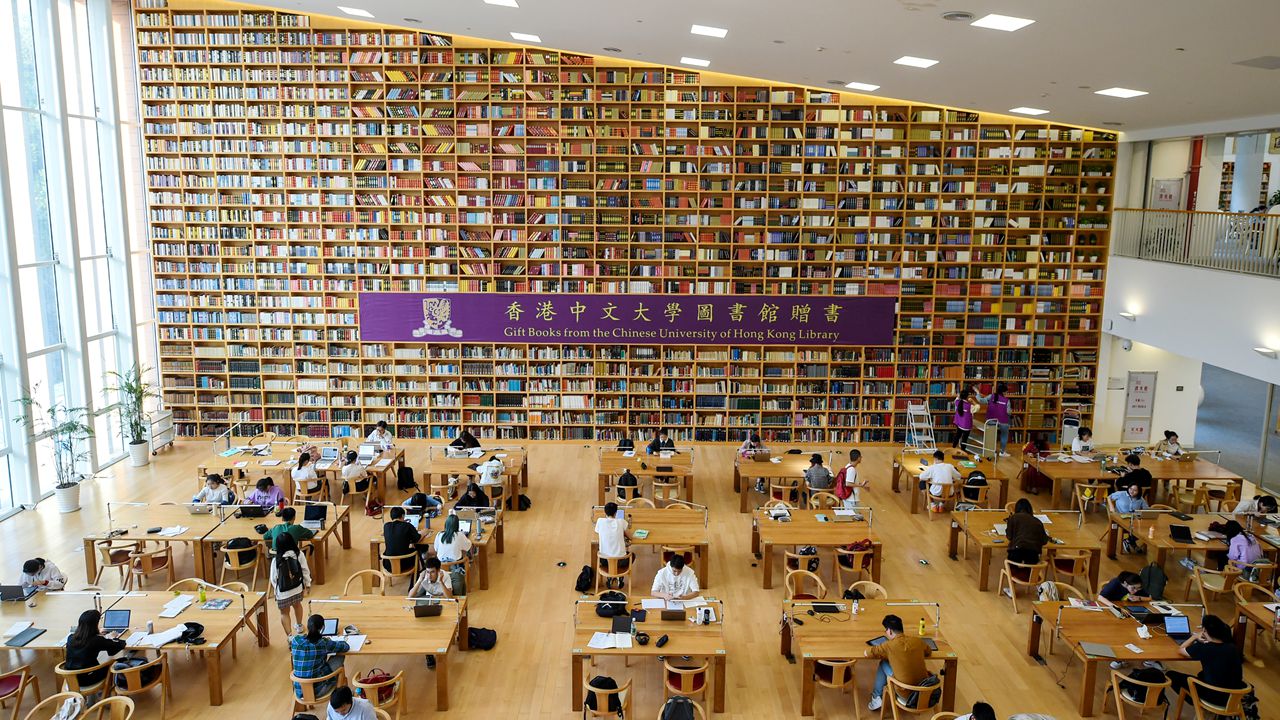
Reward for workers
Shenzhen is committed to creating more and higher-quality employment opportunities, continuously upgrading the employment priority policies and striving to enable laborers to do decent work and achieve all-round development.
12.55 million people were employed in Shenzhen in 2023.
Shenzhen has achieved the goal of safeguarding the legitimate rights and interests of laborers, and the city’s protection of wages with its insolvency fund provided timely relief of 58.5 million yuan, benefiting 4,350 people.
Medical Care
Shenzhen places people’s health as a strategic priority and continues to increase investment in health with the main objectives of “making up shortcomings, strengthening grassroots, building modern facilities and promoting health.”
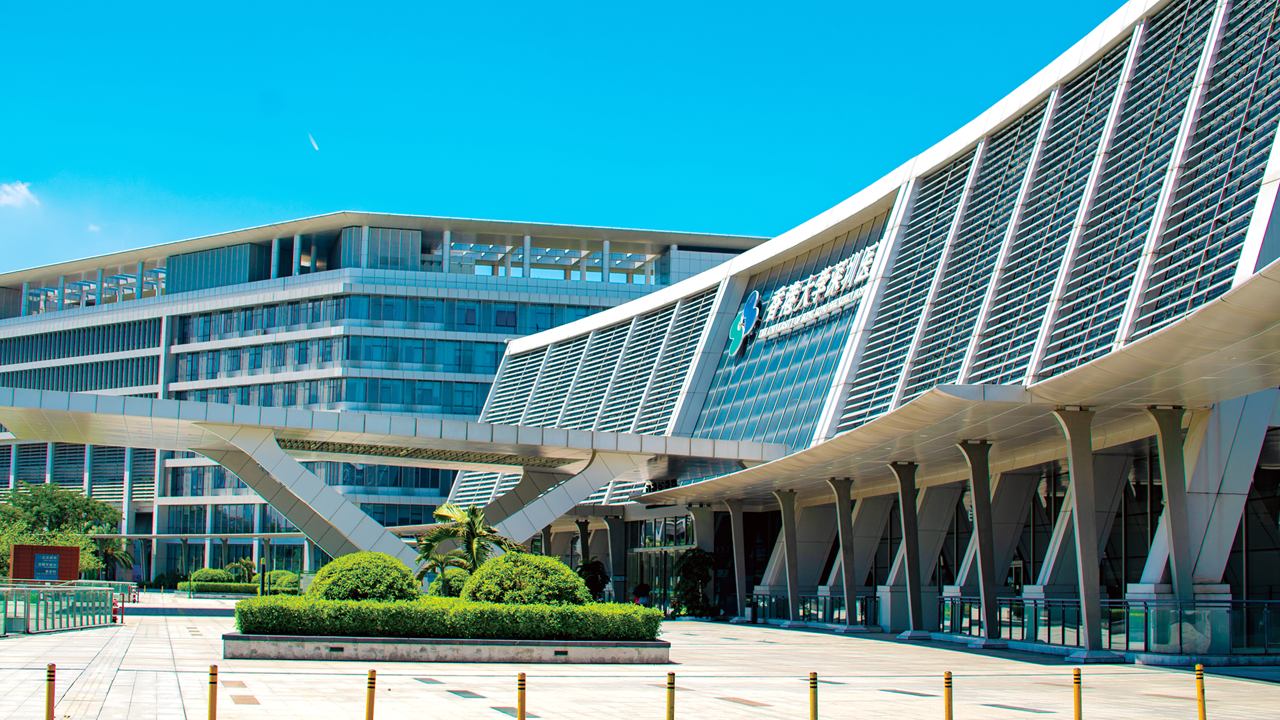
Currently, there are more than 5,200 medical institutions in the city, including 169 hospitals, of which 32 are Grade A tertiary hospitals.
Eight hospitals in Shenzhen have been included in the top 100 list in national public hospital performance assessments of similar hospitals.
Elderly care
Shenzhen continues to improve the top-level design of elderly care services, and actively promotes the construction of an integrated medical, recreational and elderly services system to achieve full coverage of health care services for the elderly.
"1336" Elderly care service system: Shenzhen aims to build a city-wide unified intelligent senior care service management platform; uniting the power of three parties ‒ government, society and family; provide three kinds of services: basic government protection, home community linkage and institutional professional care; and strengthen services at six levels: city, district, subdistrict, community, neighborhood and family.
Medical institutions at all levels open 100% of green channels for the elderly. All elderly care institutions provide various medical and health services for the elderly.
Assistance for the vulnerable
Shenzhen promotes the establishment of a tiered and classified assistance system with special social assistance and emergency social assistance as the main body which is supported by social forces.
Shenzhen has issued 56.24 million yuan in aid as of August 2023, benefiting 4,241 people in need.
Housing
To ensure citizens live and work in happiness, Shenzhen has implemented a large-scale housing construction plan, continuing to strengthen housing security as well as service support in education, transportation, and health care.
During the 14th Five-Year Plan period (2021-2025), Shenzhen will build and offer 740,000 units of subsidized housing apartments (rooms), 100% of which will be built using assembly-type construction methods and featuring high-grade “Shenzhen quality”.
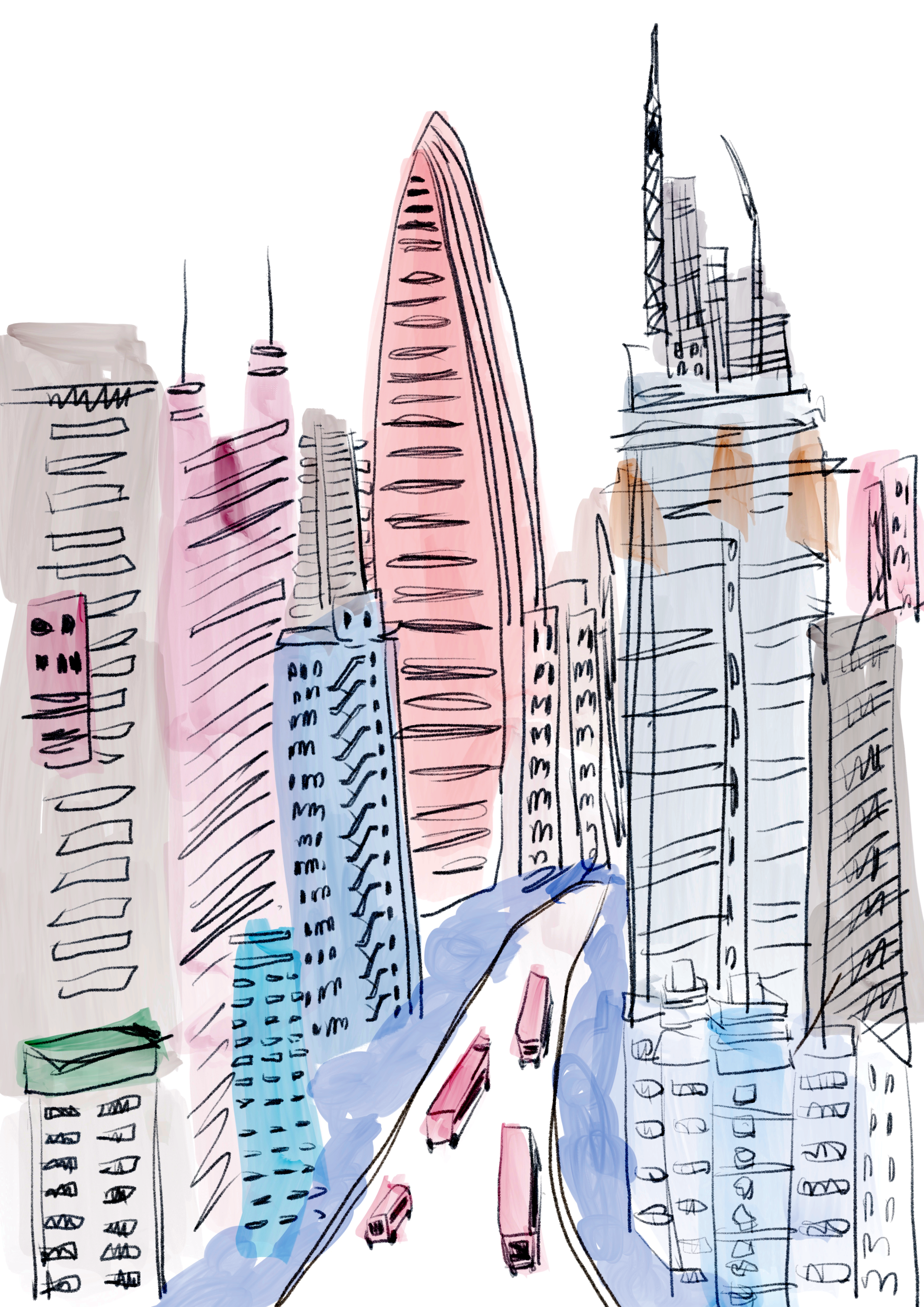
Sustainable development
Editor: Zhang Zeling | Updated: 2024-07-04
Ecological conservation
As an “international garden city”, Shenzhen is accelerating the construction of an innovation demonstration zone under the national sustainable development agenda, implementing the strictest ecological environmental protection system, to create a safe and efficient space for development, a comfortable and livable living space, and an ecological space of lucid waters and blue sky. Shenzhen initiated the "Mountain-sea Vistas" plan to build a citywide multi-level outdoor trail system that connects mountains, forests and coastlines. Currently, Shenzhen has built a greenway network of about 3,406 kilometers, and the density of greenways ranks first in Guangdong.
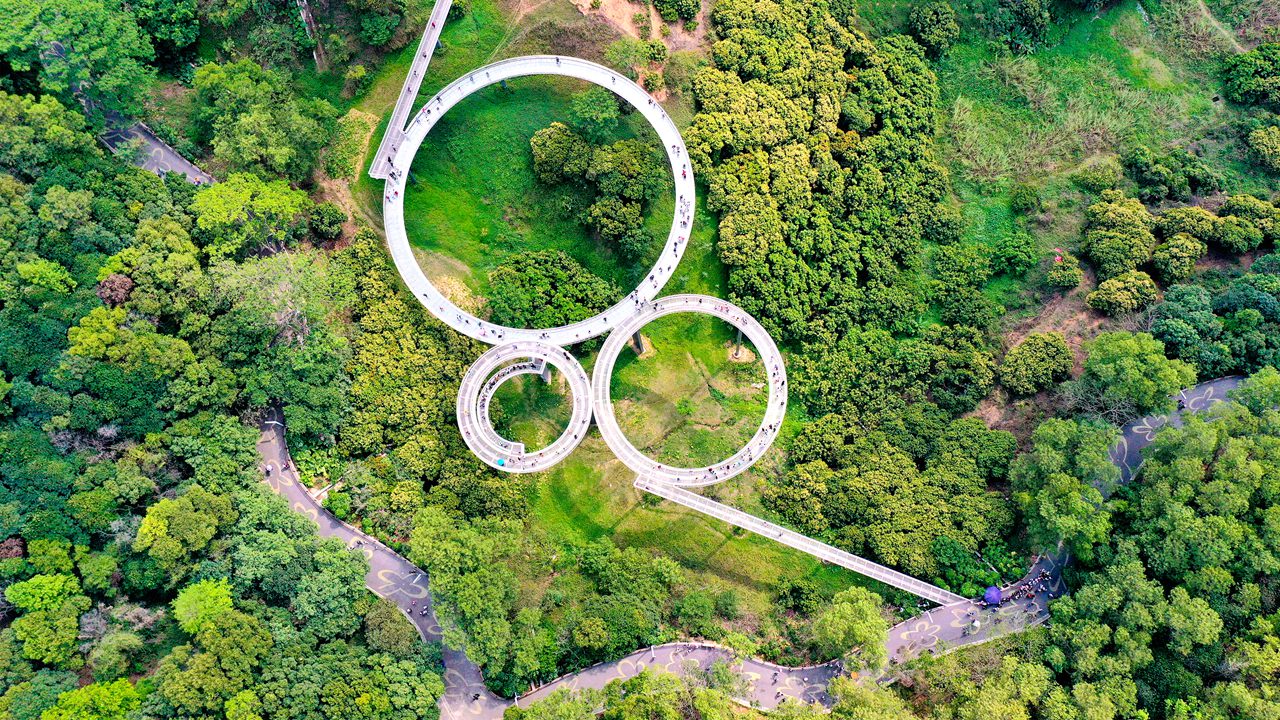
43.09%
The city’s forest area is 788.16 square kilometers, and the greening coverage of the built-up area reaches 43.09%. A total of 1,290 parks of various types and 3,406 kilometers of greenways have been built.
16 micrograms per cubic meter
From January to October 2023, the average concentration of PM2.5 in Shenzhen was 16 micrograms per cubic meter, with an AQI compliance rate of 97.8% and air quality ranking first among first-tier cities in China and achieving advanced levels by developed countries’ standard.
100%
Shenzhen is the first city in the world to have all buses and taxis powered by electricity, and it is also the city with the most complete new energy vehicle industry chain in the world.
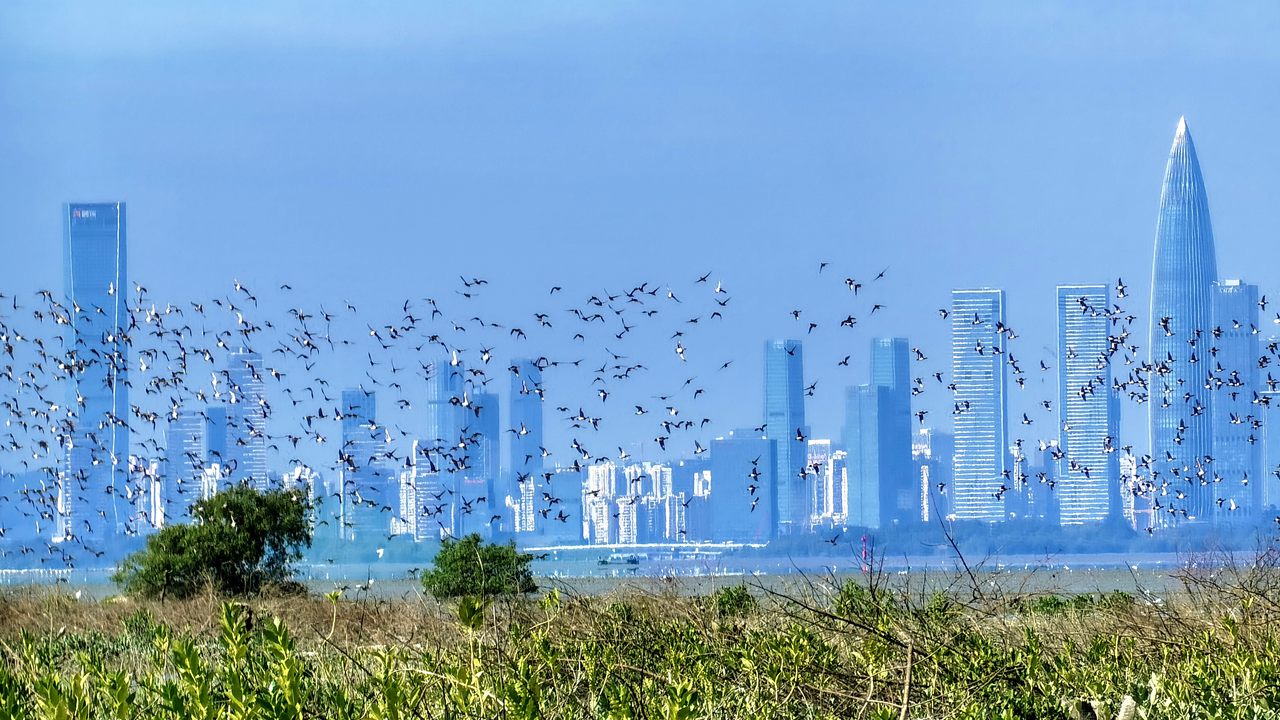
International mangrove center
The 14th Meeting of the Conference of the Contracting Parties to the Ramsar Convention on Wetlands (COP14) in Switzerland’s Geneva officially passed a draft resolution on building an international mangrove center in Shenzhen on Nov. 13, 2022. Shenzhen has been carrying out multiple wetland protection strategies in recent years, improving the classified wetland protection system. As Shenzhen’s city tree, mangrove is one of the important wetland species. Mangroves are mainly found in the Futian Mangrove Nature Reserve and partly in Shajing, Fuyong and Xixiang in Bao’an District, Shahe in Nanshan District, and Baguang, Kuichong and Nan’ao in Dapeng New Area.
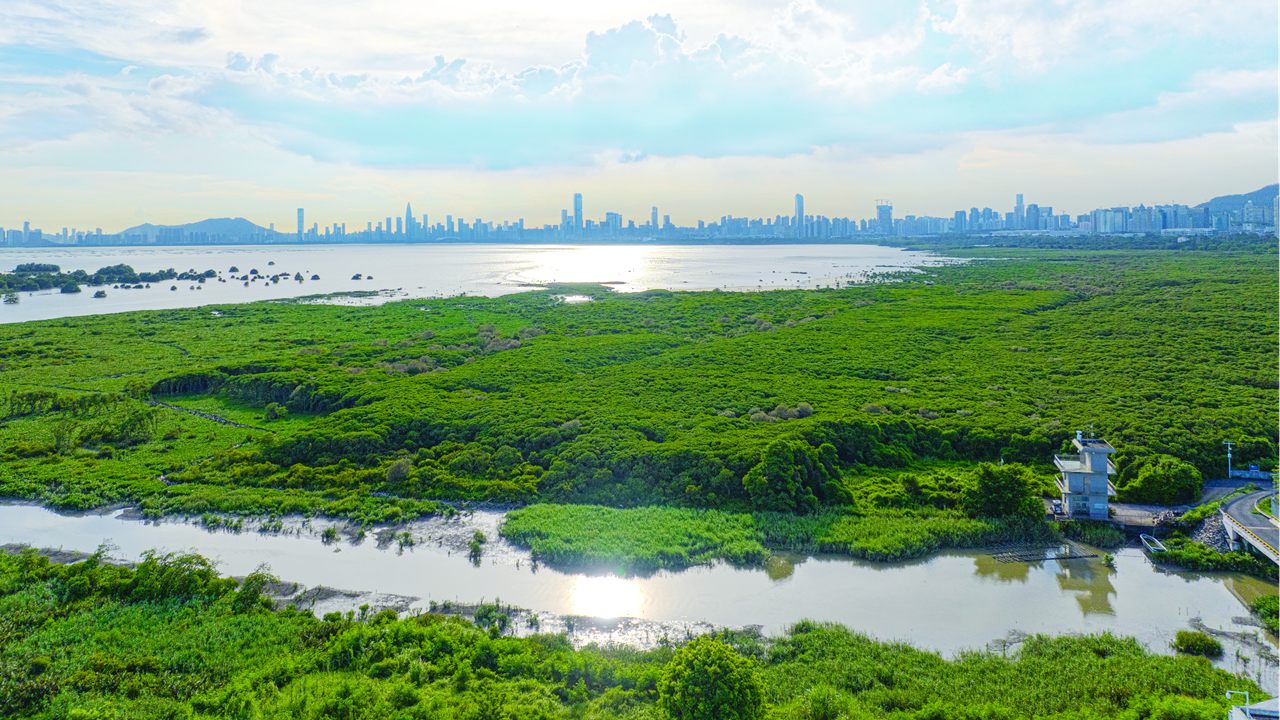
Wetland park
There have been 17 wetland parks, including one national-level and 10 city-level parks.
Mangroves
The city has 296.18 hectares of mangroves.
Mangrove Nature Reserve
The Futian Mangrove Nature Reserve has been listed as one of the key protection organizations by the International Union for Conservation of Nature and is one of the Chinese organizations of the Man and Biosphere Programme.
Green development pattern
Shenzhen's new development model takes ecological conservation as a priority and highlights the coordinated development of the land and the sea, strengthened joint protection and management of local ecology, and increased capacity in disaster prevention. The city promotes the development of green industries and aims to create a new pattern of green development to meet the goals of peaking carbon dioxide emissions and achieving carbon neutrality.

Green competitiveness
UNIDO-UNEP released the 2021 China Urban Green Competitiveness Index Report, Shenzhen ranked first among 289 cities in China, and ranked second in the China Urban Green Building Development Competitiveness Index Report.
Carbon market
Shenzhen has taken the lead in piloting the carbon markets and established the most complete carbon trading regulations and system in China, accelerating the climate finance reform.